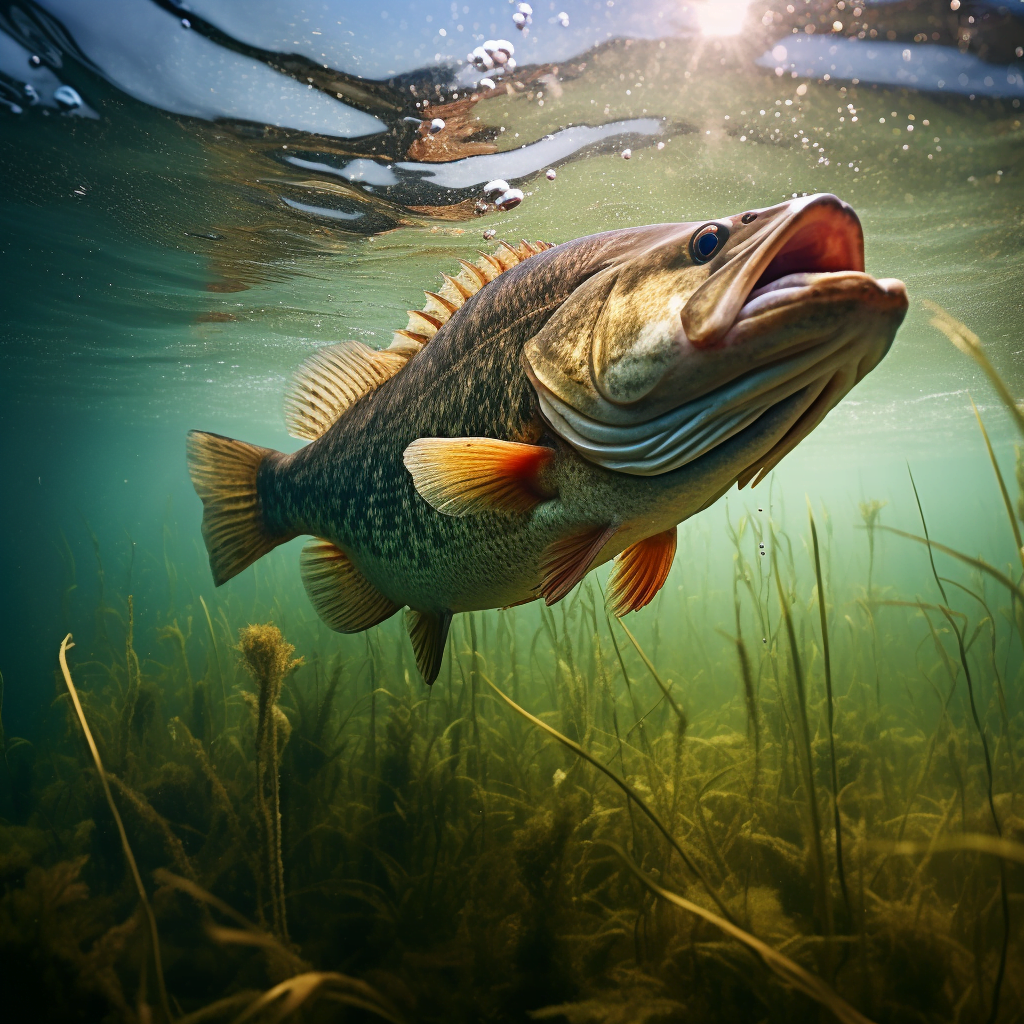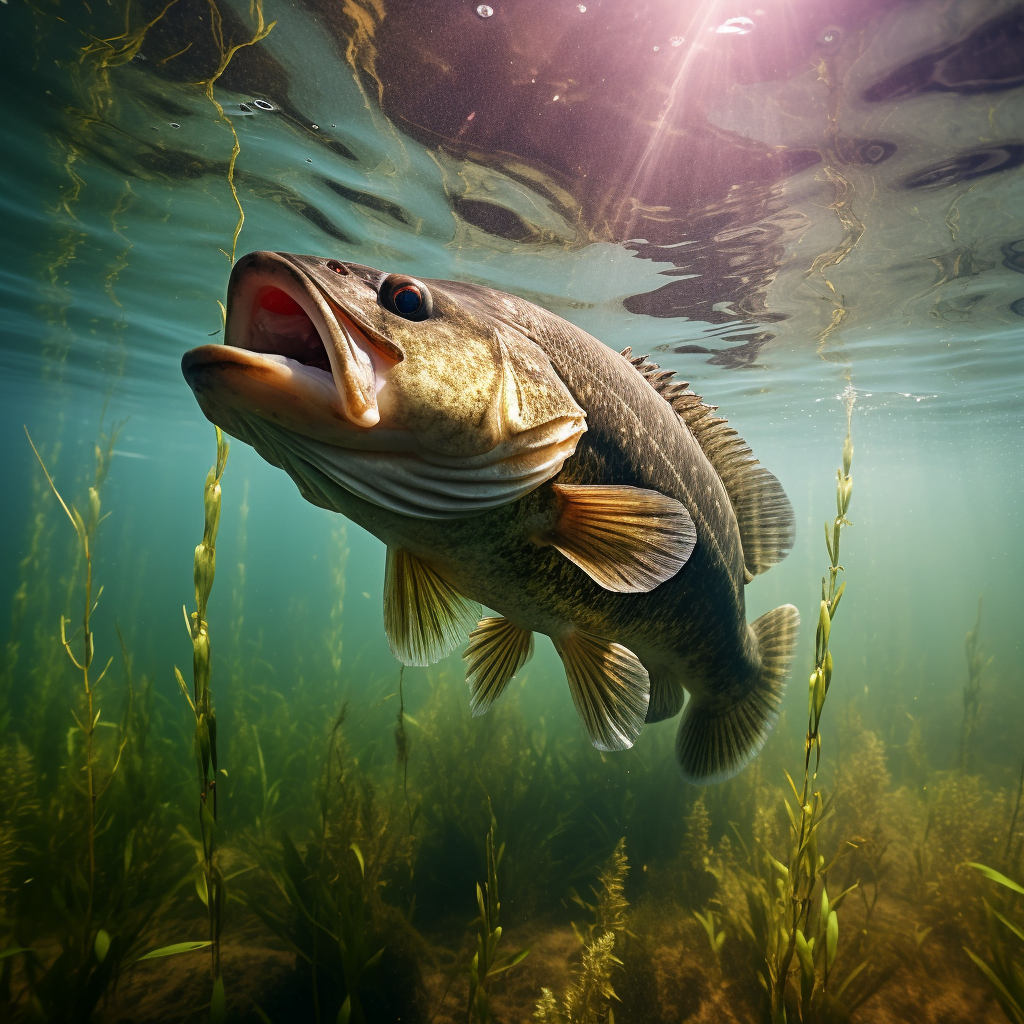Introduction
As an angler, you might have wondered, Do largemouth bass sleep? This question is not as straightforward as it seems. There are many misconceptions about fish sleep, and today we aim to debunk these myths and shed light on the sleep patterns of the largemouth bass.

Understanding the Largemouth Bass
Largemouth bass (Micropterus salmoides) are fascinating creatures that inhabit freshwater bodies across North America. They are known for their aggressive strikes and impressive size, making them a popular target for anglers. To understand their sleep patterns, it’s crucial to explore their habitat, characteristics, and behaviors.
Largemouth bass prefer calm, vegetated areas such as lakes, ponds, and slow-moving rivers. They thrive in warm water temperatures ranging from 65 to 85 degrees Fahrenheit. These fish have a lifespan of up to 16 years, with females typically growing larger than males. Largemouth bass are opportunistic predators, feeding on a variety of prey including smaller fish, insects, and crustaceans.
Their daily routine revolves around finding food, shelter, and suitable spawning grounds. Largemouth bass are most active during dawn and dusk when their prey is also active. Understanding their natural rhythms and behaviors is essential for successful bass fishing.
The Concept of Sleep in Fish
When we talk about fish sleep, it’s important to note that their sleep patterns differ significantly from those of humans. Fish do rest, but they don’t experience sleep in the same way we do. While humans have distinct sleep stages, including REM (rapid eye movement) sleep associated with dreaming, fish lack this specific sleep stage.
Instead, fish enter a state of decreased activity and slowed metabolism, often referred to as “quiet rest.” During this period, their breathing and heart rate slow down, similar to the non-rapid eye movement (NREM) sleep humans experience. This reduced activity level is often mistaken for sleep.
Do Largemouth Bass Sleep?
So, do largemouth bass sleep? Studies on the sleep patterns of largemouth bass have provided valuable insights into their rest and activity patterns. While they may not sleep in the traditional sense, largemouth bass do exhibit periods of rest and decreased activity.
Research conducted by biologists and ichthyologists has shown that largemouth bass enter a state of rest during which their activity level decreases. This rest state is characterized by slower breathing and heart rates, comparable to NREM sleep in humans. However, it’s important to differentiate between sleep and rest when discussing fish behavior.
Largemouth Bass Biology and Rest vs Sleep
To understand the rest and activity patterns of largemouth bass, it’s essential to delve into their biology. As cold-blooded creatures, their body temperature matches their environment. This biological trait significantly impacts their metabolism and rest patterns.
When the water temperature drops, largemouth bass experience a decrease in their metabolism. This metabolic slowdown is a survival mechanism that allows them to conserve energy in colder conditions. During this period, largemouth bass enter a state of “quiet rest” rather than a deep sleep.
Unlike humans, fish do not experience REM sleep, which is characterized by rapid eye movement and dreaming. Instead, they remain semi-conscious and responsive to their surroundings. This heightened awareness is crucial for their survival, enabling them to respond to threats even while resting.
Awareness During Rest and Unique Aspects of Fish Sleep
Fish, including largemouth bass, maintain a level of awareness even during their rest periods. This awareness is essential for their survival in their aquatic environment. While resting, fish remain responsive to their surroundings, ready to react to potential threats or opportunities.
One unique aspect of fish sleep is that they continue to breathe and maintain oxygen flow through their gills. Unlike humans who can close their eyes, fish lack eyelids. This absence of eyelids allows them to remain vigilant and aware of their surroundings at all times.
Sleep Patterns Based on Time and Species
Fish sleep patterns vary significantly between species and can be influenced by various factors, including time of day and environmental conditions. Some fish species, such as largemouth bass, tend to be more active during the day, while others, like walleye, are nocturnal.
Understanding these sleep patterns can greatly enhance the fishing experience. For anglers targeting largemouth bass, early morning and evening fishing trips are often the most productive. These are the times when largemouth bass are most active, feeding on their prey.
Seasonal Changes in Fish Sleep Patterns
Just like humans, fish sleep patterns are affected by seasonal changes. During spawning and migration periods, fish may experience disruptions in their sleep patterns. These disruptions are similar to how college students’ sleep is affected during exams or periods of increased stress.
In winter, the behavior of fish, including largemouth bass, changes dramatically. Cold water temperatures slow down their metabolism, leading to reduced activity levels. This metabolic slowdown is an adaptation that enables fish to survive in colder conditions. Understanding these seasonal changes is crucial for anglers to adjust their fishing strategies accordingly.

Practical Angling: Timing and Fish Activity
For anglers, understanding the active periods of fish is more important than knowing their sleep patterns. Many anglers refer to Solunar Tables and activity forecast systems to predict fish activity. These tools take into account factors such as the moon phase, sunrise and sunset times, and barometric pressure to provide insights into fish activity levels.
However, opinions vary on the accuracy of these predictions. Some anglers swear by them, while others rely on their own observations and experiences. It’s important to remember that fishing is not an exact science, and factors such as weather conditions, water temperature, and bait presentation also play significant roles in angling success.
Night Feeders: Species with Nocturnal Activity
While largemouth bass are known to be more active during the day, there are certain fish species that exhibit nocturnal activity. These night feeders, such as striped bass, crappies, tarpon, and snook, are more active during the nighttime hours.
Artificial light can influence the feeding behavior of these nocturnal species. Anglers often use specialized techniques and tools to attract these fish during nighttime fishing trips. Submerged lights, glow-in-the-dark lures, and baitfish imitations are popular choices for anglers targeting these night feeders.
Personal Anecdotes and Experiences
Every angler has unique fishing stories and experiences to share. Some have had unexpected catches during nighttime fishing, while others have found success during the day using different tactics. These personal anecdotes highlight the importance of understanding fish behavior and adapting fishing strategies accordingly.
For example, during a nighttime fishing adventure, an angler might find themselves reeling in a trophy-sized striped bass under the glow of a full moon. On the other hand, during a daytime fishing trip, an angler might experiment with various bait presentations and discover a successful technique for enticing largemouth bass to strike.
Conclusion
In conclusion, while largemouth bass do not “sleep” in the traditional sense, they do undergo periods of rest. Understanding these rest and activity patterns is crucial for sustainable fishing practices and conservation efforts. It’s also important for anglers to enhance their fishing experience and increase their chances of success.
By recognizing the unique biology and behavior of largemouth bass and other fish species, anglers can adjust their tactics accordingly. Whether targeting largemouth bass during their most active periods at dawn and dusk or exploring the nighttime adventures of nocturnal species, understanding fish behavior is key.
So, next time you’re out on a fishing adventure, armed with your fishing gear and knowledge, remember these insights about the resting behavior of the largemouth bass and other aquatic species. Happy fishing, and may your angling experiences be filled with excitement, memorable catches, and a deeper appreciation for the wonders of the underwater world.




